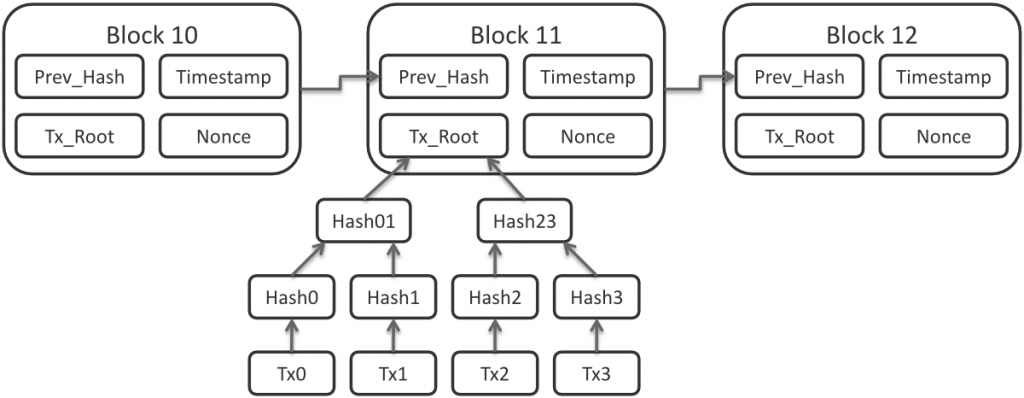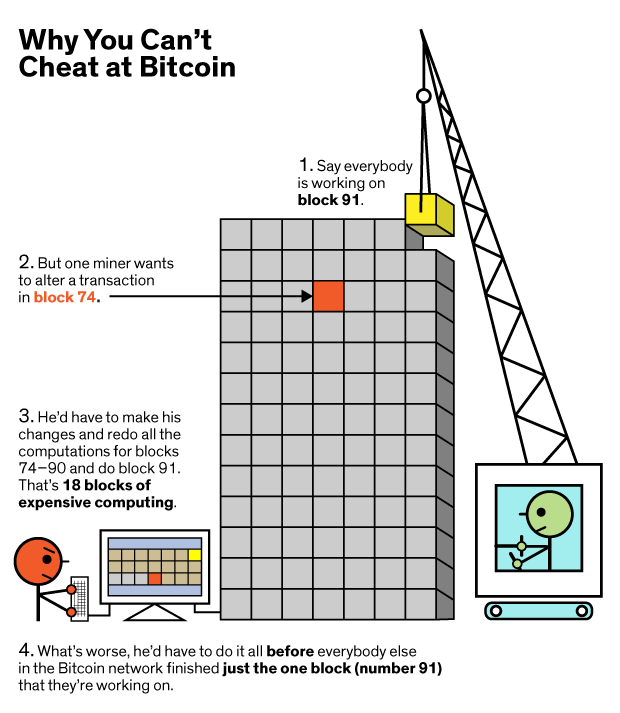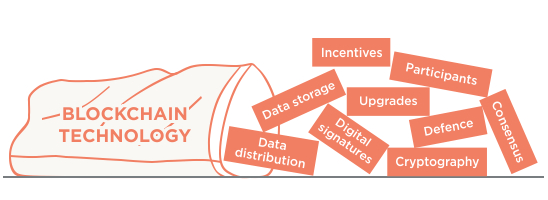Following are the 10 definitions of BlockChain:
-
The block chain consists of blocks that hold timestamped batches of recent valid transactions. Each block includes the hash of the prior block, linking the blocks together. The linked blocks form a chain, with each additional block reinforcing those before it, thus giving the database type its name. The original definition was written by Satoshi Nakamoto and found in the original source code of bitcoin.
Read the article on this page.
-
The blockchain is a log of all transactions that were ever verified on the Bitcoin network.
Read the article on this page. This definition is more related to what is bitcoin blockchain. The diagram below represents the same:

Also, look at the diagram below which shows why Blockchain is so secured.

blockchain security
-
People use the term ‘blockchain technology’ to mean different things, and it can be confusing. Sometimes they are talking about The Bitcoin Blockchain, sometimes it’s other virtual currencies or digital tokens, sometimes it’s smart contracts. Most of the time though, they are talking about distributed ledgers, i.e. a list of transactions that is shared among a number of computers, rather than being stored on a central server.
Read the article on this page.
-
The ledger (blockchain) contains a record of every single bitcoin transaction that has ever taken place. If you have the patience — and software — you can trace every transaction for a specific wallet.
Read the article on this page.
-
The technology concept behind the blockchain is similar to that of a database, except that the way you interact with that database is different.
For developers, the blockchain concept represents a paradigm shift in how software engineers will write software applications in the future, and it is one of the key concepts that needs to be well understood. We need to really understand five key concepts, and how they interrelate to one another in the context of this new computing paradigm that is unravelling in front of us: the blockchain, decentralized consensus, trusted computing, smart contracts, and proof of work/stake.

Read the article on this page.
-
A blockchain is essentially just a record, or ledger, of digital events – one that’s “distributed” or shared between many different parties. It can only be updated by consensus of a majority of the participants in the system. And, once entered, information can never be erased. The bitcoin blockchain contains a certain and verifiable record of every single bitcoin transaction ever made.
Read the article on this page.
-
In essence, the blockchain is a giant ledger that keeps track of who owns how much bitcoin. The coins themselves are not physical objects, nor even digital files, but entries in the blockchain ledger: owning bitcoin is merely having a claim on a piece of information sitting on the blockchain.
Read the article on this page.
-
Giancarlo claims that the use of a blockchain, which is the digital accounting protocol that currently powers Bitcoin transactions but is increasingly being tested for other transactions, would have made it plainly obvious to regulators that the company’s financial moves were veering off into tenuous territory.
Read the article on this page.
-
In fact, that Bitcoin is merely an app. The underpinnings-known as “the blockchain” or “distributed ledger” technology-are nothing less than a vastly faster, cheaper and more secure way to manipulate money electronically. The blockchain is poised to become the dial tone for the 21st-century global economy.
Read the article on this page.
-
A block chain is a transaction database shared by all nodes participating in a system based on the Bitcoin protocol. A full copy of a currency’s block chain contains every transaction ever executed in the currency. With this information, one can find out how much value belonged to each address at any point in history.Every block contains a hash of the previous block. This has the effect of creating a chain of blocks from the genesis block to the current block. Each block is guaranteed to come after the previous block chronologically because the previous block’s hash would otherwise not be known. Each block is also computationally impractical to modify once it has been in the chain for a while because every block after it would also have to be regenerated. These properties are what make double-spending of bitcoins very difficult. The block chain is the main innovation of Bitcoin.
Read the article on this page.
- Mathematics Topics for Machine Learning Beginners - July 6, 2025
- Questions to Ask When Thinking Like a Product Leader - July 3, 2025
- Three Approaches to Creating AI Agents: Code Examples - June 27, 2025
I found it very helpful. However the differences are not too understandable for me